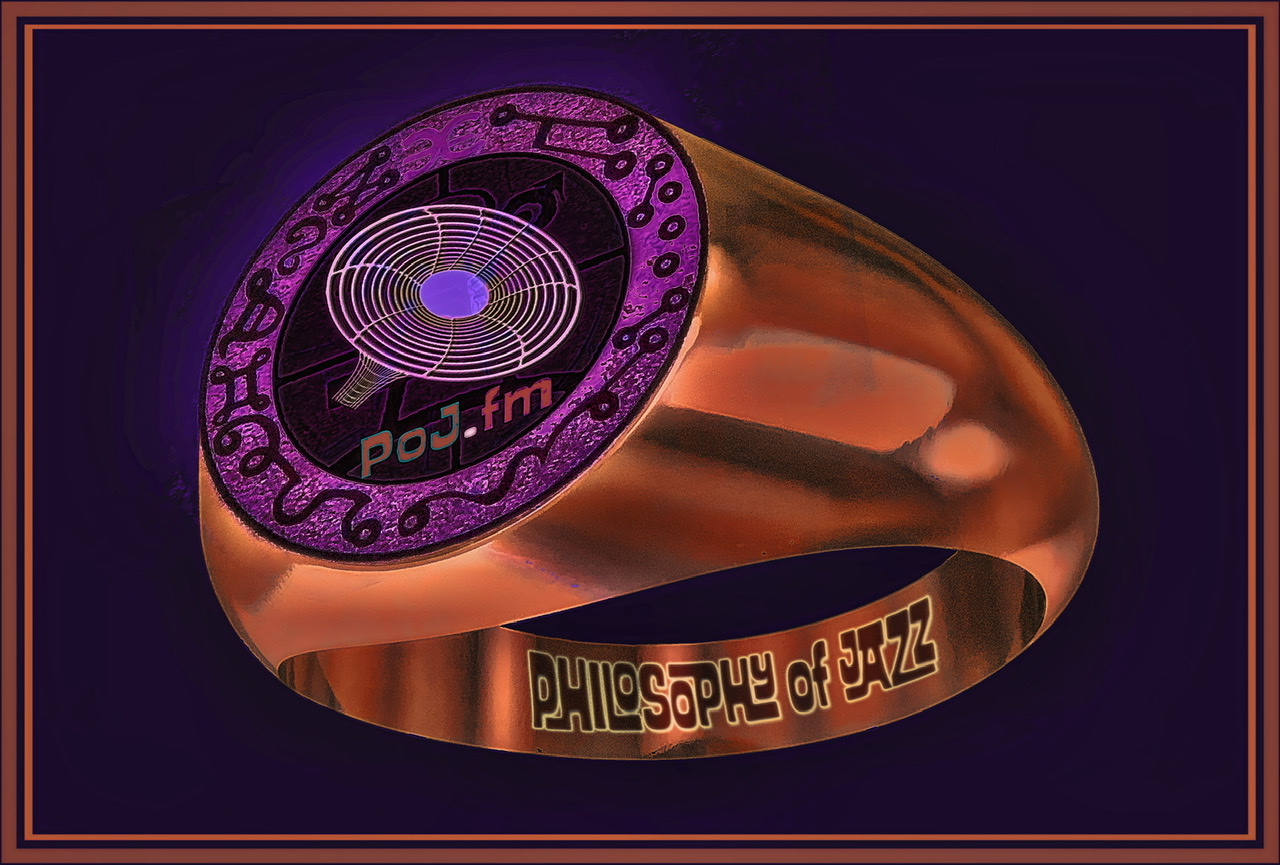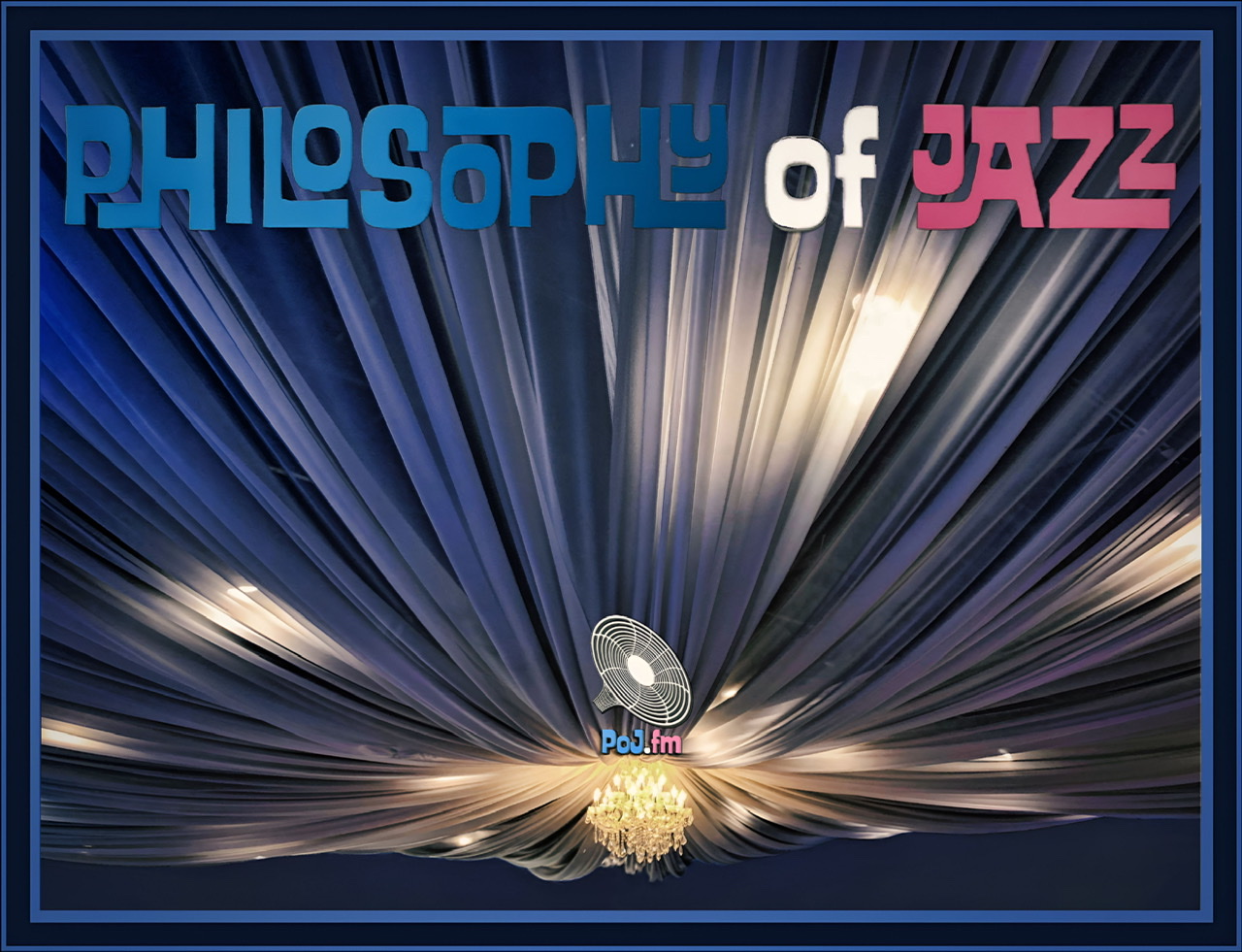Difference between revisions of "Ep19. Essentialism in jazz discourse"
(→The Jazz Diaspora model) |
(No difference)
|
Latest revision as of 19:02, 10 July 2022
Contents
Discussion[edit]
Introduction[edit]
Essentialism, as a doctrinal approach for analyzing phenomena, proposes or assumes the existence of its subject matter as having essential properties.
“Essentialism, in ontology, [is] the view that some properties of objects are essential to them. The “essence” of a thing is conceived as the totality of its essential properties. Theories of essentialism differ with respect to their conception of what it means to say that a property is essential to an object. The concept of an essential property is closely related to the concept of necessity, since one way of saying that a property P is essential to an object O is to say that the proposition “O has P” is necessarily true. A general but not very informative way of characterizing essential properties is to say that a property is essential to an object if the object cannot lack the property and still be the object that it is. Properties of an object that are not essential in this sense are said to be accidental.”[1] (bold not in original)
The Stanford Encyclopedia of Philosophy explains that properties are “those entities that can be predicated of things or, in other words, attributed to them. Thus, properties are often called predicables. Other terms for them are “attributes,” “qualities,” “features,” “characteristics,” or “types.” Properties are also ways things are, entities that things exemplify or instantiate.”[2]
“Of the three kinds of essential property those individuals may be thought to possess — essential physical characteristics, substance-type, and origin—it is the third, origin, that has been the most active subject of debate in recent years. As with many other philosophical debates over the last twenty-five years, the discussion of origins began with Kripke. Kripke asks, how could a person originating from a different sperm and egg from the one she actually came from, be that person? The implication is that she could not, and that it is consequently essential, for every person x, that x should originate from the very sperm and egg that x actually originates from.” [3] (bold not in original)
Essential properties are ones that their instantiator necessarily exemplifies, or it would not be that particular kind of thing. For example, a red firetruck 🚒 cannot be any other color other than red, so red is a necessary property required for an exemplifying red firetruck 🚒, and hence would be an essential property required for all red fire vehicles.
Some philosophers disagree that red is an essential property of red firetrucks. Rather, they argue, red is an accidental property of a red firetruck since the same firetruck could be painted yellow 🚕 while remaining a firetruck.
Many jazz commentators have shied away from reading or interpreting jazz as having any essential features. For example, Bruce Johnson finds that an essentialist reading of jazz should be discouraged. It helps to understand his point of view by reading his remarks in the context of what he says about essentialism. For easier future reference, his four major points are numbered (BJ1–BJ4), and they are consecutive sentences in his text with no breaks or omitted material, although here separated spatially for ease of reference:
- (BJ1) “It is necessary to develop alternative narratives, to continue to shift emphasis from the “text” to the larger historical and cultural contexts, but also to think in terms of different kinds of discourse, as for example the “process approach” discussed by Harris (2003, 120).
- (BJ2) These alternative “off-center” perspectives will also sustain a healthy skepticism about the criteria of evaluation that are deployed in jazz historiography, including the dubious instrument of “authenticity” and its associated aesthetics. They include the autonomy of the text that transcends place and time (Williams 1983, 253), the “essence” of jazz, and an imposed teleology (Gioia 2011, 45, 185).
- (BJ3) It is notable that the teleological model is rarely if ever applied to, for example, tribal musics that are situated as the irredeemably “other.” This teleology is a privilege reserved for Western and westernized musics. By these criteria, performers are understood not on their own terms but only in relation to some platonic model decided upon by commentators.
- (BJ4) Perchard cautions against “any notion of historical process that is unidirectional and goal-directed, rather than the repetitious, messy and inconclusive” (Perchard 2015, 12). Once the “center” is displaced, we are able to find interest and value in any performance as an engagement with place and history.”[4] (number designations and bold not in original)
Johnson makes four major points (BJ1–BJ4) in the preceding quotation and it is appropriate to consider them in more detail.
“To appreciate jazz performance on its own terms, it is also useful to avoid “talking over” the subject, and be prepared to surrender some ex post facto essentialisms. Given the testimony of the jazz pioneers, positivist categorizations like “jazz, pure and simple” (Gioia 2011, 63) sound rather glib.[5] (bold and bold italic not in original)
➢ Why should essentialism be discouraged in jazz interpretation?
Jazz cannot escape having some essential properties even if jazz itself has no essence. Just as all trees must have a woody, perennial stem essentially, so too, jazz music must be an instance of music. Sticking to the subject matter of a live jazz performance by multiple human beings simultaneously (a jazz group) requires all of the following essential properties in the sense of being necessary conditions for the phenomenon of an effective jazz performance to exist.
To prove the above features are required for a jazz performance requires arguments. One way to prove something's necessity is to imagine a situation that lacks the factor in question and consider the results.
To prove that (IPM 1) is a necessary condition for jazz musical performances think of a scenario where no performers are intentionally playing music. (For further considerations regarding possible unconscious intentions in making music, see PoJ.fm's Ontdef3. What is the definition of jazz?: Objection to Requiring Conscious Intention for Music Production. and PoJ.fm's Ontpj8. What intentions does a jazz improviser have?). What could such performers be doing if they are not intending to be playing music? Well, they cannot be using any musical instrument in an ordinary way. If a saxophonist has no intention to be playing a saxophone, then under normal circumstances, he, or she, or they will not be playing a saxophone.
“In modern analytic philosophy there are several debates about the fundamental nature of properties. These center around questions such as: Are properties universals or particulars? Are properties real? Are they categorical or dispositional? Are properties physical or mental?At least since Plato, properties are viewed by numerous philosophers as universals, which are typically capable of being instantiated by different objects. Philosophers opposing this view regard properties as particulars, namely tropes.
A realist about properties asserts that properties have genuine, mind-independent existence. One way to spell this out is in terms of exact, repeatable, instantiations known as universals. The other realist position asserts that properties are particulars (tropes), which are unique instantiations in individual objects that merely resemble one another to various degrees. Transcendent realism, proposed by Plato and favored by Bertrand Russell, asserts that properties exist even if uninstantiated. Immanent realism, defended by Aristotle and David Malet Armstrong, contends that properties exist only if instantiated.
The anti-realist position, often referred to as nominalism claims that properties are names we attach to particulars. The properties themselves have no existence. . . .
An intrinsic property is a property that an object or a thing has of itself, independently of other things, including its context. An extrinsic (or relational) property is a property that depends on a thing's relationship with other things. The latter is sometimes also called an attribute, since the value of that property is given to the object via its relation with another object. For example, mass is a physical intrinsic property of any physical object, whereas weight is an extrinsic property that varies depending on the strength of the gravitational field in which the respective object is placed. Other examples are the name of a person (an attribute given by the person's parents) and the weight or mass of the person.
In classical Aristotelian terminology, a property (Greek: idion, Latin: proprium) is one of the predicables. It is a non-essential quality of a species (like an accident), but a quality which is nevertheless characteristically present in members of that species.”[6] (bold not in original)

The Jazz Diaspora model[edit]
In the new jazz studies there has been an interest in recognizing the diasporic aspects of jazz's history. A major proponent of a jazz diasporadic account has been Australian jazz theorist, academic, jazz writer & trumpet player Bruce Johnson. Johnson has insightfully explored and developed some of the implications for rejecting a canon-centered from the core of New Orleans and then relegating everything else to the periphery as the correct historical model for jazz. He rightfully points out that jazz's developmental history was messy and complicated in its evolution and dispersal.
“scopocentric adj. neol. (Bruce Johnson c. 1994) assuming, usually implicitly, other types of expression than visual to be of lesser importance (cf. logocentric, graphocentric).

Post-structuralist critiques of essentialism[edit]
Ingrid Monson, in her 1994 article "Doubleness and Jazz Improvisation: Irony, Parody, and Ethnomusicology," points out how post-structuralists emphasize the contingency of knowledge and challenge anyone's claim to stable essences in concepts. The insights of post-structuralist critiques have made ethnomusicologists more cognizant of the problems with assuming what Monson characterizes as a 'homogeneous concept of culture' that Monson and her post-structuralist colleagues now reject.
“Post-structuralist discourse, which emphasizes the historical contingency of knowledge, questions the coherence of totalizing concepts such as culture, challenges the notion of transcendent universals, and critiques as essentialist descriptions that define groups in terms of un-varying sets of characteristics, has problematized four key assumptions that have guided ethnomusicologists for decades:
- 1. Distinct musical cultures exist and are relatively homogeneous internally.
- 2. Musical cultures can be described meaningfully through ethnography and academic discourse.
- 3. We can inductively generalize to the level of culture from our fieldwork data.
- 4. Clear boundaries can be drawn between cultures.
These assumptions, which characterize what I am calling a homogeneous concept of culture, have been critiqued increasingly within the field, particularly by work in urban areas and popular music. We have come to recognize that the boundaries between our areas of study are hopelessly entwined, that what is observed in music is likely to recur in other domains of cultural activity, and that musicians borrow from everywhere. The writings of Pierre Bourdieu and Mikhail Bakhtin, among others, have made us aware of the importance of dialogic and multivocal perspectives in our work. Consequently, we are more likely to realize the idiosyncratic and historically situated character of the data resulting from our research than to presume its generalizability.”See footnote 3 in this blockquote (bold and bold italic not in original)
Footnote 3. See Pierre Bourdieu, Outline of a Theory of Practice, trans. Richard Nice (Cambridge, 1977), and Mikhail Bakhtin, "Discourse in the Novel," The Dialogic Imagination: Four Essays, trans. Caryl Emerson and Michael Holquist, ed. Holquist (1935; Austin, Tex., 1981), 259–422. Examples of work in ethnomusicology informed by these ideas include Steven Feld, "Aesthetics as Iconicity of Style or 'Lift-up-over Sounding': Getting into the Kaluli Groove," Yearbook for Traditional Music 20 (1988): 74–113; Louise Meinties. "Paul Simon's Graceland, South Africa, and the Mediation of Musical Meaning," Ethnomusicology 34 (Winter 1990): 37–73; and Waterman. "'Our Tradition is a Very Modern Tradition': Popular Music and the Construction of Pan-Yoruba Identity," Ethnomusicology 34 (Fall 1990): 367–79.[7] (bold not in original)

Founding Director of the Sarah Parker Remond Centre for the Study of Racism & Racialisation, Professor Paul Gilroy, has promoted a new conception and understanding of ethnic authenticity as applied to black music that is anti-anti-essentialism in his book, The Black Atlantic.
“racial slavery was integral to western civilisation and looks in detail at the master/mistress/slave relationship which is foundational to both black critiques and affirmations of modernity. It argues that the literary and philosophical modernisms of the black Atlantic have their origins in a well-developed sense of the complicity of racialised reason and white supremacist terror. Chapter 3 pursues these themes in conjunction with a historical commentary on aspects of black music. It offers an inventory of queries about the ideas of ethnic authenticity that are routinely constructed through discussions of that music, the gender identities it celebrates, and the images of "race" as family that have become an important part of both producing and interpreting it. The chapter tries to demonstrate why the polarisation between essentialist and anti-essentialist theories of black identity has become unhelpful. It proposes that analyzing the history of black Atlantic music might play a useful role in constructing a more satisfactory set of anti-anti-essentialist arguments.[8] (bold not in original)

Jazz Boundaries[edit]
“Since DeVeaux’s article, scholars have continued to deconstruct the master narrative of jazz by asserting the importance of community over individuals (Monson 1996; Jackson 2012), of women instrumentalists (Tucker 2001; McGee 2010), of fusion and smooth jazz (Fellezs 2011) and other crucial aspects that have been left out of the master narratives of jazz (Heller 2013). The master jazz narrative, as DeVeaux argues, is produced by elimination through a construction of difference. “Jazz is jazz because it emphasizes musical characteristics that are deemphasized in other forms or because it lacks those elements seen as central to other forms. It is defined through exclusion.” (DeVeaux 1991:528) In a later article, titled “Core and Boundaries,” DeVeaux makes this point explicit: “It's not a matter of what to leave in, but what to leave out. History is storytelling. Naturally, any story is a matter of exclusion—deciding what to leave out. It's a matter of drawing boundaries." (Deveaux 2005:16) (bold not in original)
Jazz historian Eric Porter’s contribution to the aptly named Jazz/Not Jazz, a volume dedicated to the boundaries of jazz, is similarly focused on these mechanisms of exclusion:"The boundaries of jazz are maintained by calling attention to sub-genres or specific musical projects that some might view as jazz but that can also be seen as lacking some essential property (swing, improvisation, the fusion of African and European devices, spontaneity, sounds from black popular music, accessibility) or containing elements, such as commercial appeal, or sounds that some believe reside more comfortably in other musical genres. For example, jazz fusion is perceived to be “not jazz” because it uses elements from rock and funk such as electric instruments and a different rhythmic basis; the avant-garde fails the jazz test for some because it abandons swing and other fundamentals; and the neoclassicists are seen as deficient because they fail to understand that change is fundamental to the art form.” (Porter 2012:17) (bold and bold italic not in original)
That the construction of jazz’s historical narrative is dependent on the delineation of boundaries is clear, but historians’ desire to “defend” jazz from being absorbed into a larger narrative of American popular music requires further interrogation. Are we to inquire who gets to delineate those boundaries? Who gets to defend jazz? Who is positioned on each side of the border, and what are the power differentials and stakes of being included or excluded from “jazz” as a category?[9] (bold and bold italic not in original)

Internet Resources[edit]
- Albert Mosely, "The Moral Significance of the Music of the Black Atlantic," Philosophy East and West January 2007, 57(3): 345–356.
NOTES[edit]
- ↑ Editors of Encyclopaedia Britannica, "Essentialism," Encyclopedia Britannica, November 18, 2015. Accessed March 21, 2022.
- ↑ Orilia, Francesco and Michele Paolini Paoletti, "Properties," The Stanford Encyclopedia of Philosophy (Spring 2022 Edition), Edward N. Zalta (ed.).
- ↑ Storrs McCall, [http://oxford.universitypressscholarship.com/view/10.1093/acprof:oso/9780198236221.001.0001/acprof-9780198236221-chapter-8 Chapter 8: "Essential Properties," in A Model of the Universe: Space-Time, Probability, and Decision (New York:Oxford University Press, 1996).
- ↑ Bruce Johnson, Ch. 6 "Alternative Methodologies," Jazz Diaspora] (New York: Routledge, 2019), 159.
- ↑ Bruce Johnson, "Diasporic Jazz," in The Routledge Companion to Jazz Studies, Nicholas Gebhardt, Nichole Rustin-Paschal, and Tony Whyton (eds.) (New York: Routledge, 2019), 19–20.
- ↑ Wikipedia: Property.
- ↑ See page 284 of Ingrid Monson, "Doubleness and Jazz Improvisation: Irony, Parody, and Ethnomusicology," in Critical Inquiry, Vol. 20, No. 2, (Winter, 1994)
 , 283–313. Literally reprinted with p. 284 on p. 294 of Jazz, edited by Tony Whyton (Cornwall, Great Britain: Ashgate Publishing, 2011.
, 283–313. Literally reprinted with p. 284 on p. 294 of Jazz, edited by Tony Whyton (Cornwall, Great Britain: Ashgate Publishing, 2011.
- ↑ Paul Gilroy, The Black Atlantic, "Preface," x.
- ↑ Ofer Gazit, "Sounds Like Home: Immigrant Musicians on the New York Jazz Scene," (Ph.D. diss., University of California, Berkeley, 2016), 13–14.